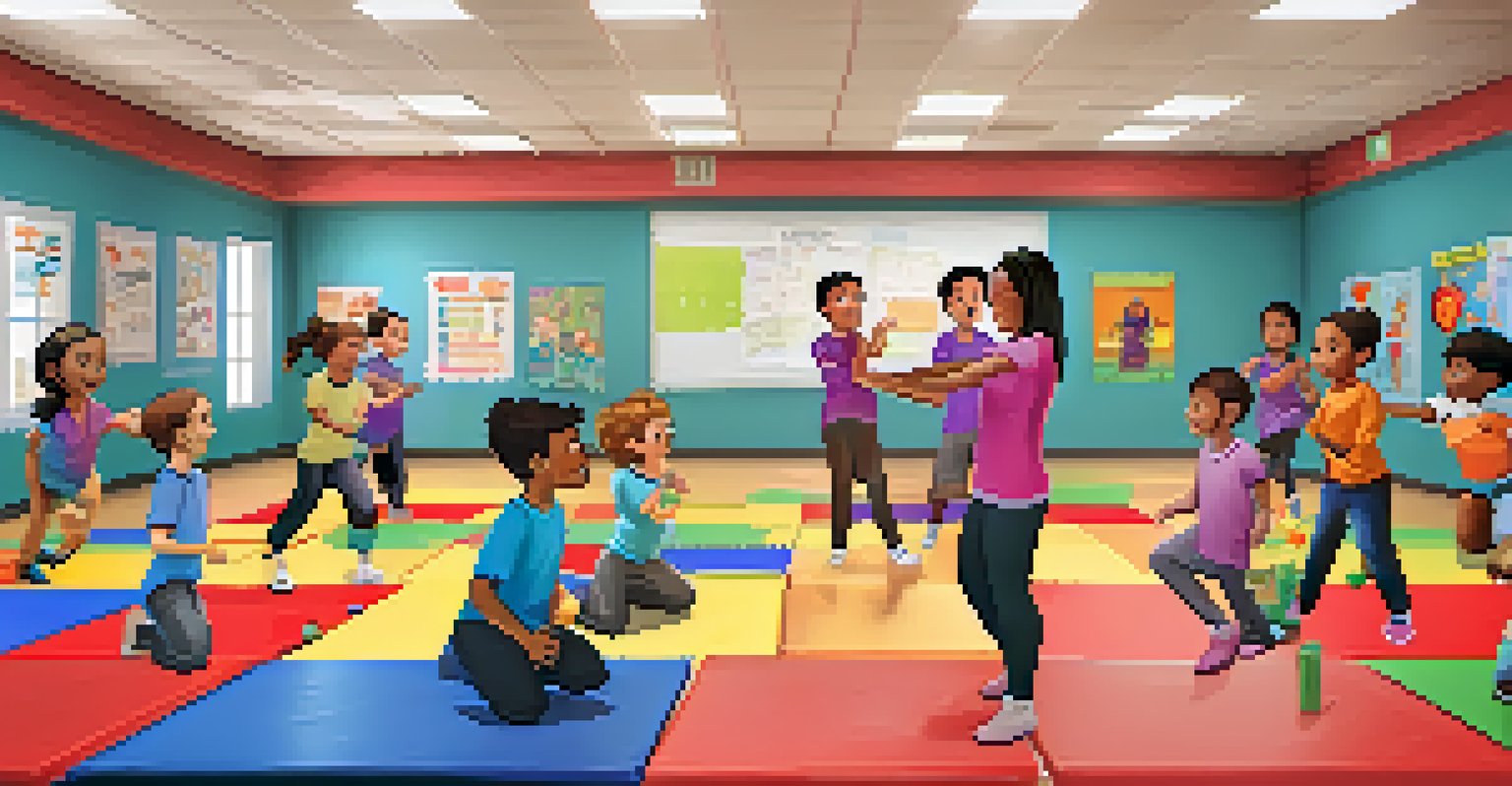Self-Defense Skills: Teaching Kids to Stay Safe

Understanding the Importance of Self-Defense for Kids
Teaching self-defense to kids goes beyond physical techniques; it’s about instilling confidence and awareness. In today's world, children encounter various situations that require them to react quickly and wisely. By learning self-defense, they gain valuable skills that can empower them to stay safe and make informed decisions.
The best defense is a good offense.
Self-defense education helps children recognize potential dangers and develop a proactive mindset. Instead of simply reacting in fear, they learn to assess situations and determine the best course of action. This ability to think critically can make all the difference in keeping them safe.
Moreover, self-defense can bolster a child's self-esteem. As they master new skills, they grow more confident in their abilities, which translates into other areas of their life—whether it’s at school, in sports, or social interactions.
Basic Self-Defense Techniques Every Child Should Know
When teaching kids self-defense, start with simple techniques that they can easily remember and execute. For instance, teaching them how to break free from a wrist grab can be an empowering lesson. By practicing this technique, they learn that they have the power to escape potentially dangerous situations.

Another essential skill is how to use their voice effectively. Encouraging kids to shout for help or assertively say 'no' can deter potential threats. This vocal confidence is often overlooked but can be crucial in attracting attention and support when needed.
Self-Defense Empowers Kids
Learning self-defense builds children's confidence and decision-making skills, helping them navigate potentially dangerous situations.
Finally, educate them about the importance of awareness. Techniques like scanning their environment and recognizing safe spaces can help kids avoid dangerous situations before they escalate. The combination of physical techniques and mental preparedness creates a well-rounded approach to self-defense.
Creating a Safe Environment for Learning Self-Defense
A supportive environment is vital when teaching children self-defense. Ensure that they feel safe and understood throughout the learning process. This might mean practicing in a familiar setting, like their backyard or a community center, where they feel comfortable.
Self-defense is not a license to kill, but a right to survive.
Additionally, choose instructors who are not only skilled in self-defense but also have experience working with children. They should be patient, encouraging, and able to explain concepts in a relatable way. This connection can help kids feel more engaged and eager to learn.
Finally, involve parents or guardians in the process. By encouraging them to participate in lessons or discussions, they can reinforce the concepts at home, creating a consistent message about safety and self-defense.
The Role of Communication in Self-Defense Education
Effective communication is key when teaching self-defense to kids. It’s essential to explain why certain techniques are important and how they can help in real-life situations. This understanding not only enhances their learning but also makes them more likely to practice what they’ve learned.
Encourage open discussions about feelings and fears related to safety. Kids should feel comfortable expressing their concerns, allowing instructors or parents to address them adequately. This dialogue fosters a supportive atmosphere where children can thrive.
Practice Makes Perfect
Regular practice of self-defense techniques, combined with engaging activities, solidifies skills and boosts children's self-assurance.
Lastly, using storytelling can be a powerful tool. Sharing age-appropriate anecdotes or scenarios can help kids relate to the lessons. When they see how self-defense techniques can be applied in real contexts, they’re more likely to remember and utilize them.
Building Confidence Through Self-Defense Practice
Regular practice is crucial for building confidence in self-defense skills. Children should engage in drills that reinforce their techniques, allowing them to become second nature. The more they practice, the more assured they'll feel in their abilities.
Incorporating games and fun activities can make practice enjoyable. For example, setting up obstacle courses or mock scenarios can keep kids engaged while they learn. This blend of play and learning helps solidify their skills in a relaxed environment.
Celebrate their progress, no matter how small. Recognizing improvements in their technique or confidence can motivate them to continue practicing. This positive reinforcement encourages a lifelong commitment to personal safety.
Teaching Situational Awareness for Enhanced Safety
Situational awareness is a crucial component of self-defense education. Teach kids to observe their surroundings and identify potential threats, such as unfamiliar individuals or unsafe environments. This skill can help them avoid dangerous situations before they escalate.
Encourage them to trust their instincts. If something feels off, they should know it’s okay to remove themselves from the situation. This ability to listen to their gut feelings can be a powerful tool in ensuring their safety.
Community Supports Safety Learning
Creating a supportive community around self-defense enhances the learning experience, encouraging kids to practice and share their successes.
Role-playing various scenarios can be an effective way to teach situational awareness. By practicing how to respond in different situations, kids can better understand the cues that signal a potential threat and how to react appropriately.
Encouraging a Supportive Community Around Self-Defense
Building a community around self-defense can enhance the learning experience. Encourage kids to attend classes together or join self-defense clubs. This camaraderie not only makes learning more enjoyable but also fosters a sense of safety among peers.
Involving parents and caregivers in the community can create a supportive network. They can share resources, organize group classes, or host events that promote safety awareness. This teamwork reinforces the importance of self-defense and safety for everyone involved.

Lastly, sharing success stories within the community can inspire others. Highlighting kids who have effectively used their self-defense skills can motivate others to engage in their learning journey. This shared encouragement can create a positive feedback loop, enhancing everyone’s commitment to safety.